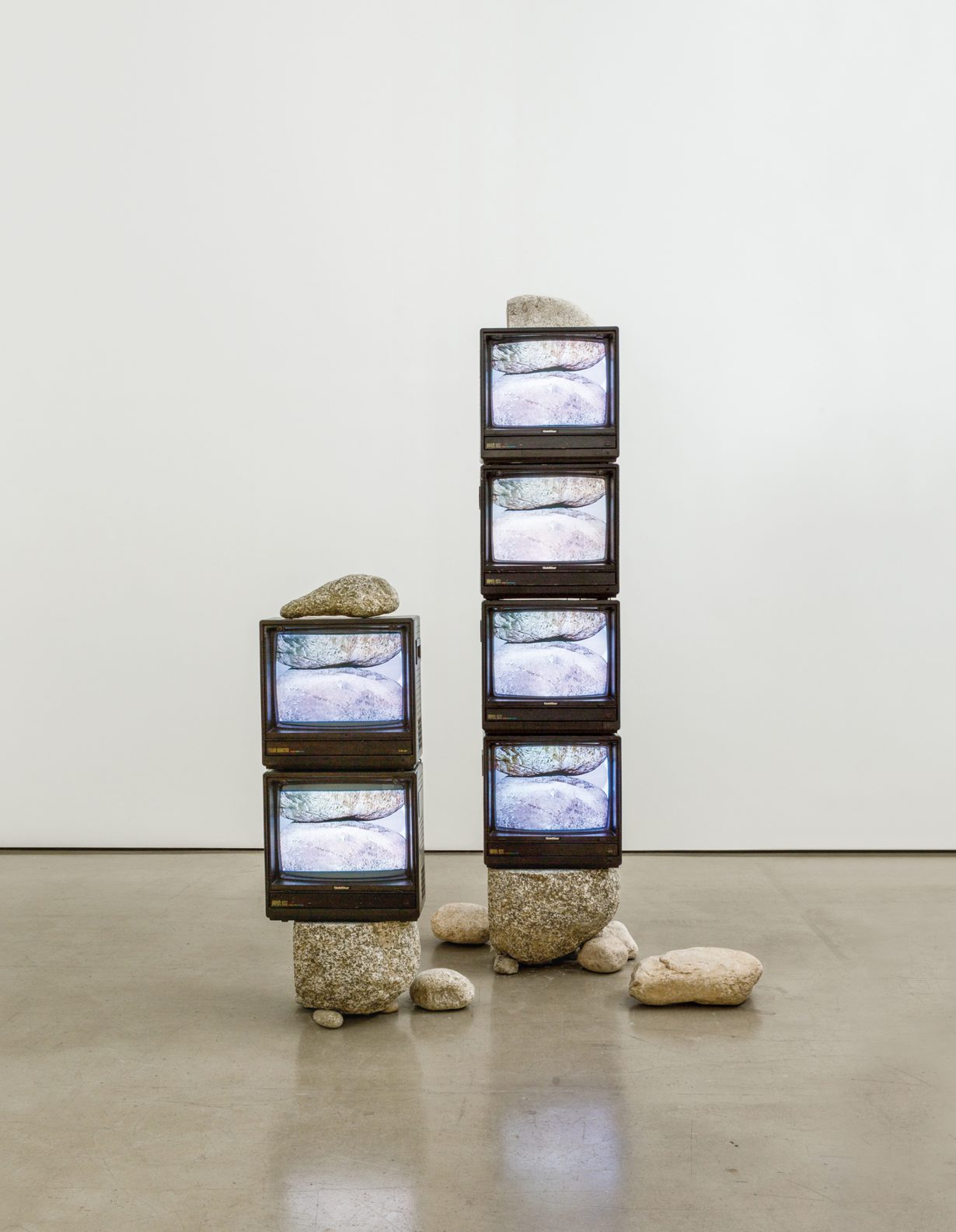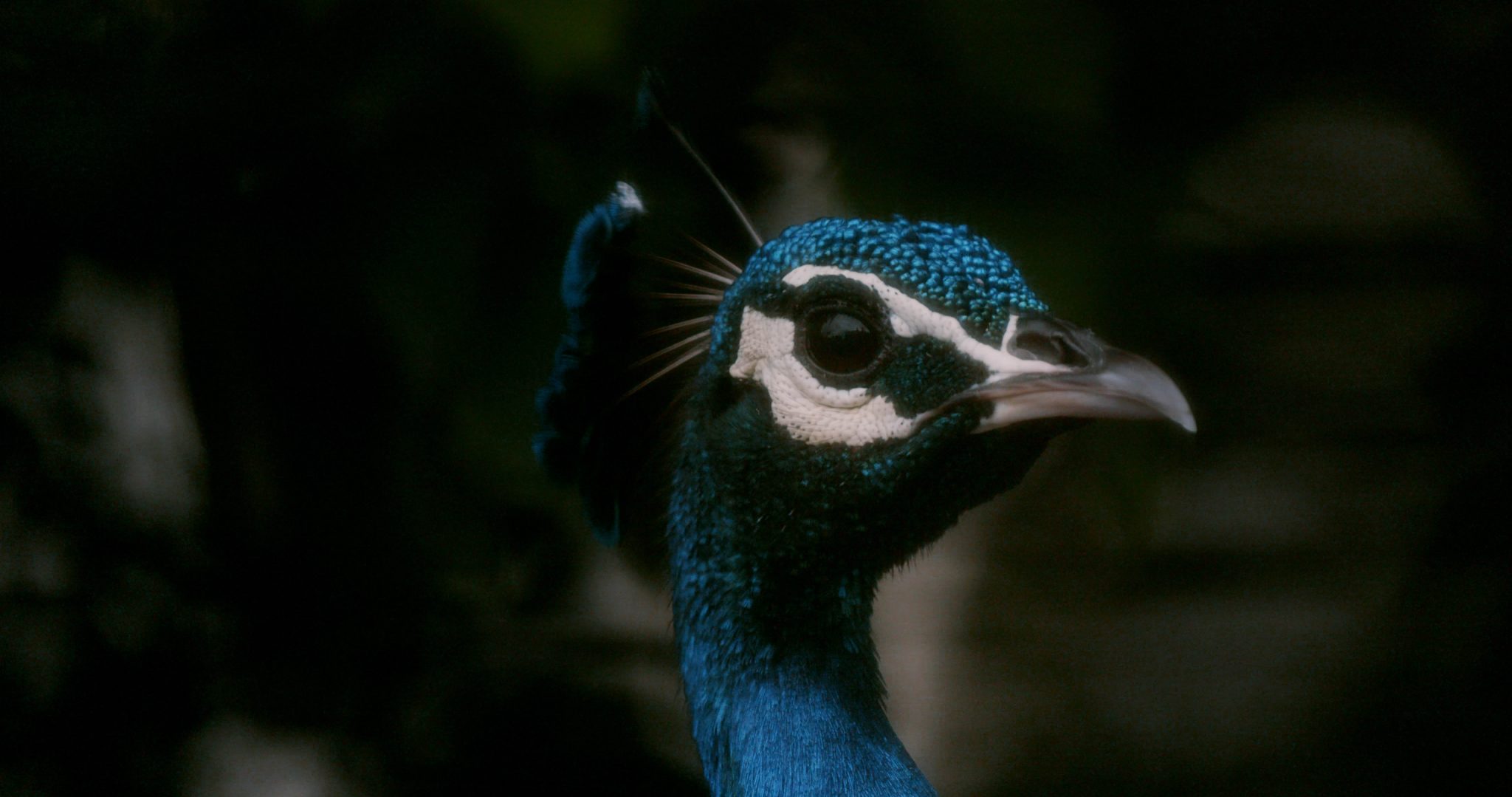A new exhibition at M+, Hong Kong opens up the landscape genre in ink art to the context of a postindustrial, digital world
Featuring artworks and design items from the M+ collection, this exhibition opens up shanshui, the landscape genre in ink art, to the context of a postindustrial, digital world, by amplifying the conceptual nature of the tradition’s Chinese name, meaning ‘mountain and water’. Introducing a twenty-first-century poetics of shanshui in the first of nine sections, aptly titled ‘Expanding the Canon’, is Chua Chye Teck’s Scholar’s Rocks (2013–18). Arranged on a plinth, concrete clumps gathered from construction sites in Singapore are placed on wood stands like urban gongshi (rocks admired for their resemblance to other natural phenomena). Situated between the symbolic and real, these forms traditionally function as objects of contemplation that tap into the ineffable, cosmic totality of life on earth, much like a shanshui painting: conduits between the tangible and intangible, solid and fluid, past and present.
Likewise, Guo Cheng’s Becoming Ripples (2024), installed nearby, seems almost to stand as an illustration of the show’s introductory text, which describes shanshui as a mode of ‘philosophical thinking and poetic imagination’: mirrored fabric behind a glass window ripples according to a kinetic system based on electromagnetic waves drawn from sources like wi-fi signals. The undulations generate fluid, abstract reflections that recall ink mountains, or anything else flowing – or reflective, for that matter, which seems to be the point. Take Xu Bing’s ink on paper Landscript sketch in the Himalayas (1999), a landscape of Chinese characters whose English translations are printed on tracing paper placed over a facsimile of the painting in Landscript sketch in the Himalayas-English translation of the Chinese characters (1999), shown alongside it. Lines like ‘Dense white fog’ and ‘There is something here but I do not know what’ highlight the psychological dimensions of the landscape as a space where the objective and subjective meet.
Other works take up the exhibition’s subtitle, Echoes and Signals. Guo Hongwei’s watercolour-on-paper series of mineral specimens, Illustration Book of Natural Form (2017), and Awazu Kiyoshi’s offset lithograph of stratalike coloured lines, Sky Sea West East (1980), depict Earth’s materiality as the power source for communication technologies. Nearby, two twentieth-century radios from the museum’s collection, produced by the Tanin Industrial Company, are shown next to Sakumi Hagiwara’s black-and-white digitally transferred 16mm film Kiri (1972), of a fog lifting over a landscape to the metonymic sound of a prayer bell, as if to illustrate communications as almost spiritual binding, cosmic forces that reverberate through all things.
The inclusion of design objects might feel forced, until you surrender to this exhibition’s shanshui state of mind, in which any object can function as a ‘philosopher’s stone’. Isamu Noguchi’s Radio Nurse and Guardian Ear (1937), a pair of Bakelite and enamelled steel encasements for a two-way radio the artist designed for the Zenith Radio Corporation, double as artistic forms and functional devices, echoing shanshui paintings by connecting the concrete and abstract, near and far. Noguchi’s ‘Cloud Mountains’ sculptures reinforce that expansive connectivity, with hot-dipped galvanised steel forms, including Mountains Forming (1982–83/1984), seeming to mirror the hills and skyscrapers of Hong Kong’s harbourfront skyline visible through the windows, a shanshui IRL.

Movement defines ‘Light and Sound’, a black-box section centring on two moving-image works. In Nguyen Trinh Thi’s immersive audiovisual installation 47 Days, Sound-less (2024), circular mirrors installed on a ceiling frame reflect roving orblike images across the space, beamed from a projector, of jungle scenes from movies like Apocalypse Now (1979). At times, the projections stop, leaving ambient sounds that bleed into a screening room where Amar Kanwar’s seven-channel video installation The Peacock’s Graveyard (2023) uses images of animals, rivers and plants to tell morbid stories, including those of a hangman who quits his job and a beggar who leaves behind a fortune in death. Outside, Shiro Kuramata’s 1972 tinted acrylic lampshade that looks like a ghostly white sheet, Lamp (Oba Q), and Heidi Lau’s (All is) non-hierarchical (2022), a craggy midnight-blue ceramic arc, echo Kanwar’s incarnation of natural forms to embody ghostly tales.
The natural world’s capacity to hold human stories continues in ‘Interventions in Nature’, where Ana Mendieta’s single-channel Super 8 film Silueta Sangrienta (Bloody Silhouette, 1975) shows the artist lying naked on a muddy riverbank, disappearing to leave a bodily outline filled with a luminous red liquid. She then reappears lying face down in that imprint: an iconic fusion of human and land. Liu Chuang’s three-channel video Bitcoin Mining and Field Recordings of Ethnic Minorities (2018) amplifies the planet’s profoundly energetic materiality within the context of deep, living time, by exploring crypto mining in the context of China’s imperialist and modern histories, and in relation to the peoples of the Zomia region, with one scene blending faces across time and space. The scope of Liu’s video, which spans millennia, miles, histories and fictions, distils into sculptural form in the exhibition’s final room, ‘Restart’. Here, Park Hyunki’s Untitled (1987/2018) comprises two columns of analogue TV monitors showing videos of rocks, which are stacked upon and topped by actual rocks: a merger of the symbolic and real, like a shanshui painting.
Shanshui: Echoes and Signals at M+, Hong Kong, ongoing
